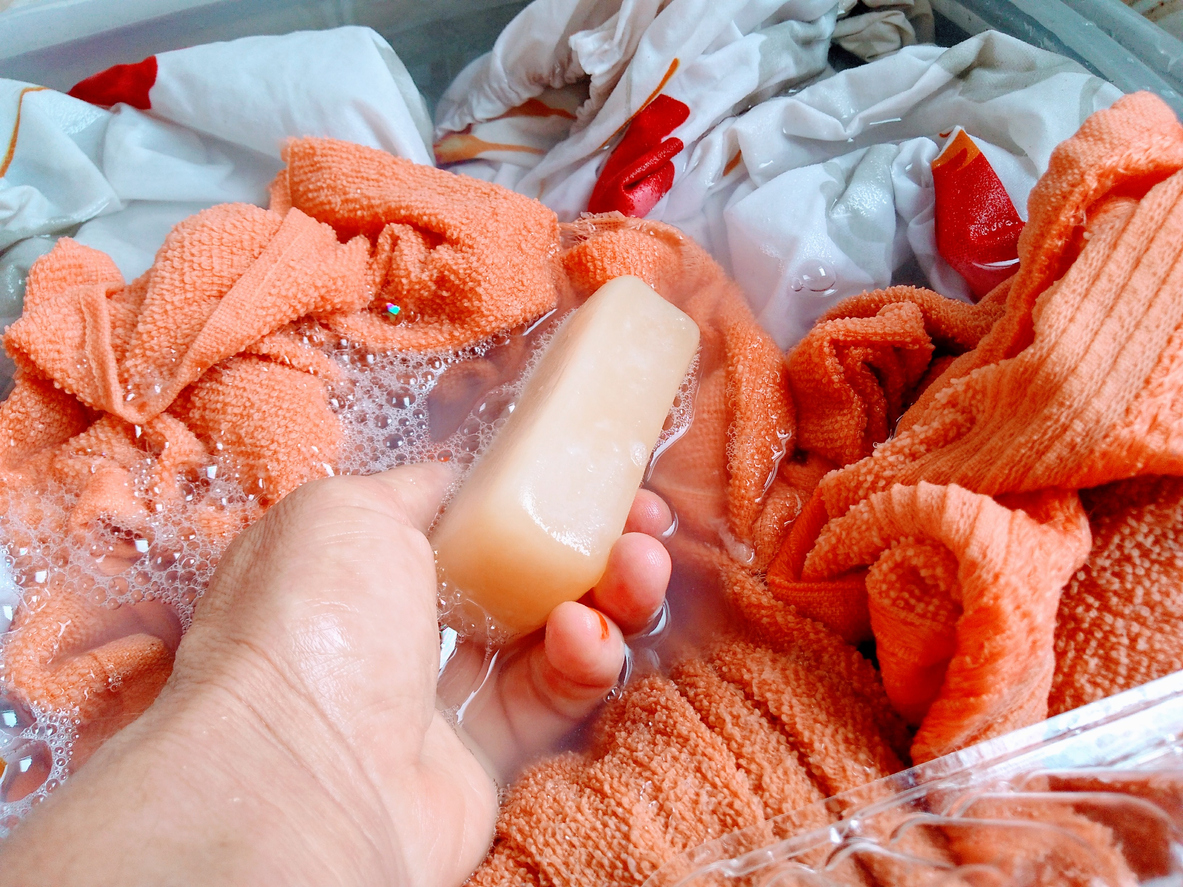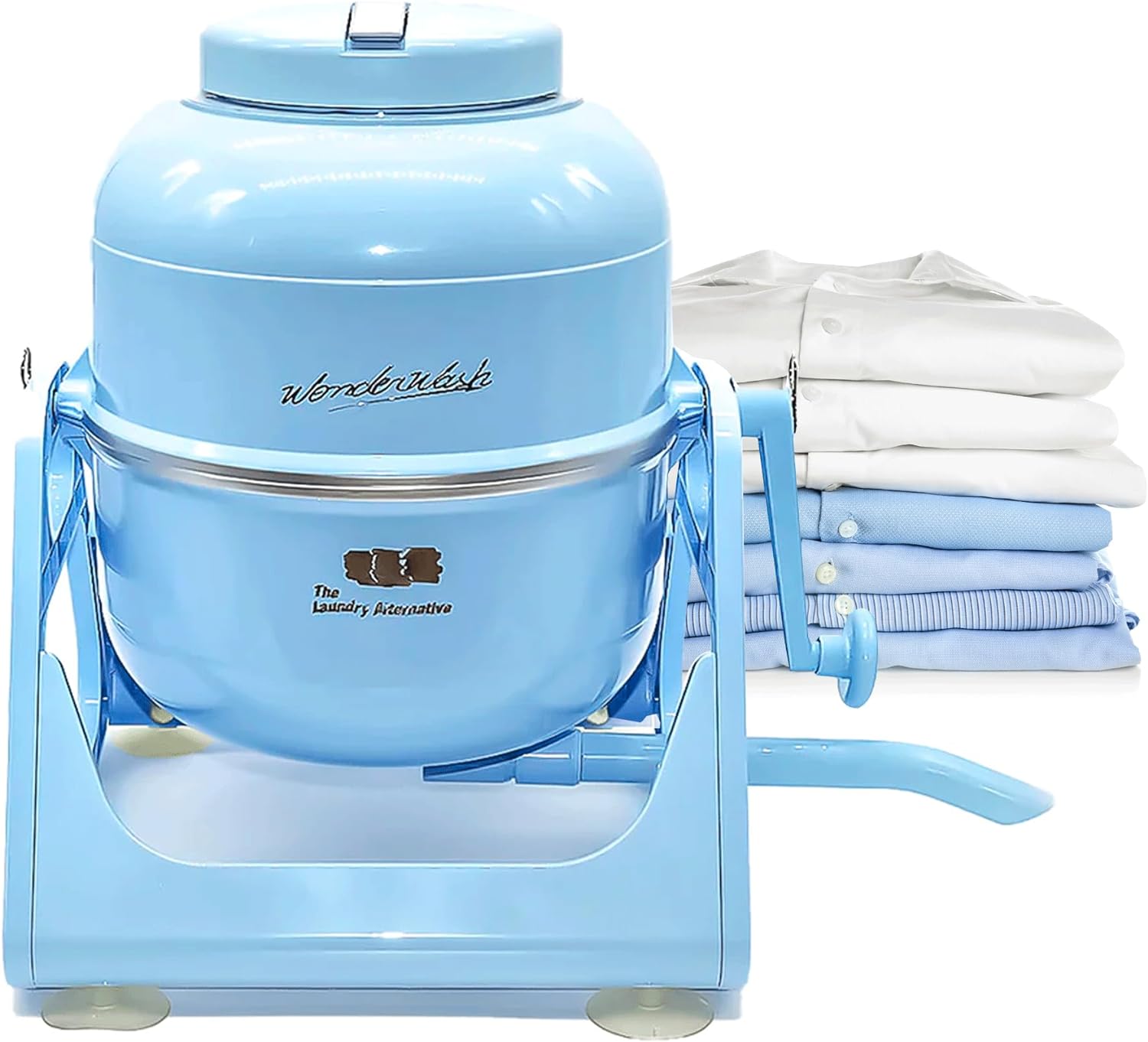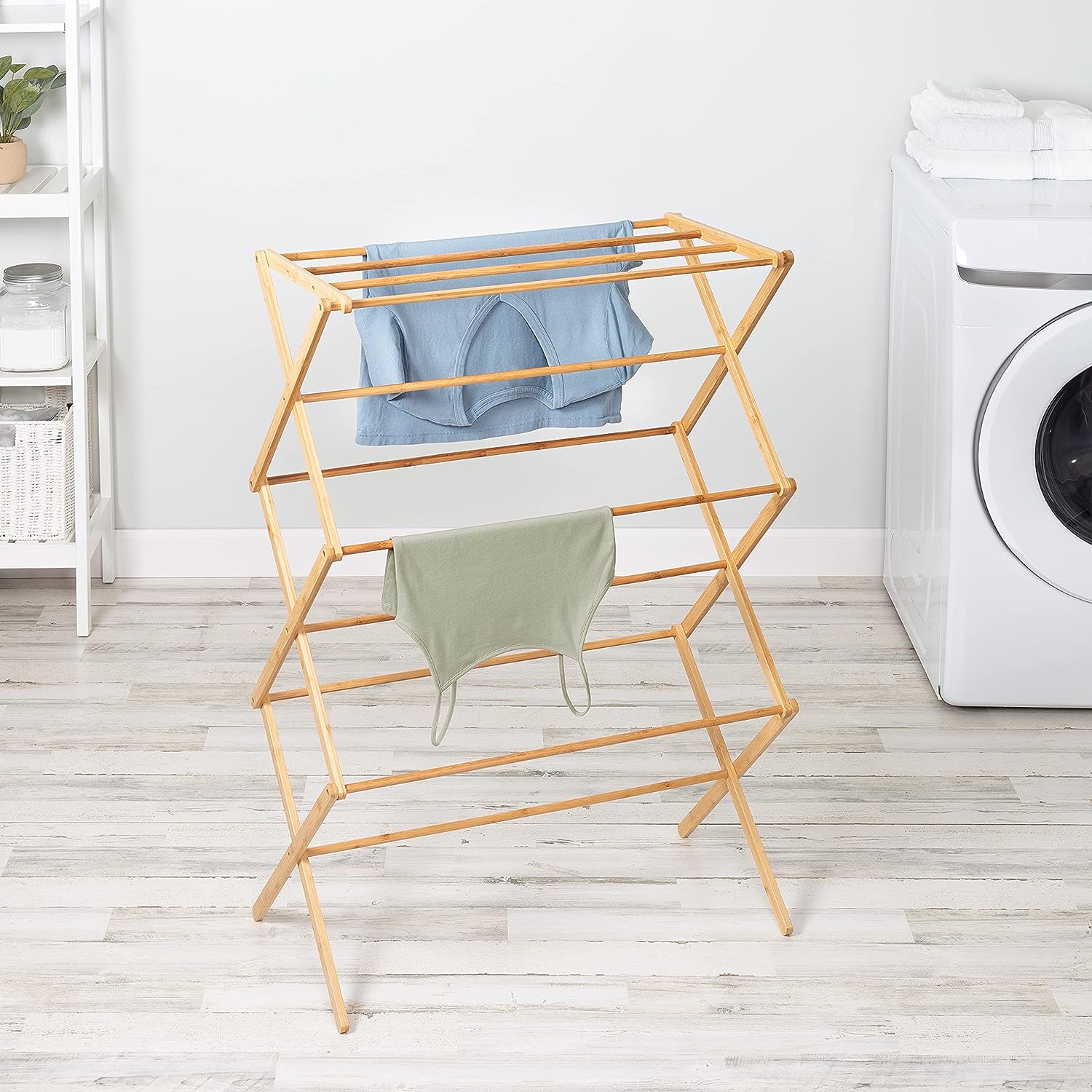We may earn revenue from the products available on this page and participate in affiliate programs. Learn More ›
Washing clothes is an essential chore we all have to do, but using a washing machine to complete the task isn’t always an option if your home is off-grid, in an RV, or can’t handle high energy consumption. And when storms roll in, frequent brownouts and power outages can take the machine option away.
On average, washing machines use 400 to 1,400 watts of electricity per hour, or from 200 to 1,050 watts per load. That’s a lot of energy usage that homeowners can easily save on by washing clothes manually. Read on to learn how to wash clothes by hand or use a manual washing machine to reduce energy consumption in your home or to fill in when no washer is available.
Benefits of Manual Washing
In addition to reducing electricity usage, there are other benefits for manual washing:
- Preserve clothing life. A washing machine might be a convenient tool, but it can be rough on clothing, causing fabrics to wear out over time. Hand-washing or using a manual washing machine both are more gentle on clothing, leaving your favorite pieces in good condition for longer.
- Maintain clothing color or structure. Similarly, washing machines can cause fabric to fade or ruin the structure of delicate items such as sweaters or bras. Manual washing allows you to control the intensity of the wash to protect clothes from damage.
- Cost-effective: Manual washing saves on water as well as electricity. Your utility bills will be lower by forgoing a machine wash and doing the job yourself.
RELATED: 13 Surprising Pantry Items That Naturally Clean and Freshen Your Home
Before You Begin
As you would before shoving your clothes into a washing machine, check clothing labels to see how the manufacturer recommends the garment be washed. This will help you determine which manual washing option is best for the item. Delicate items, such as clothing made of lace, is usually best washed by hand anyway.
You should also check clothing for stains and pretreat spots before washing. Pour a small drop of detergent onto the stain and work it into the clothing gently using your hands or a clean toothbrush. Let sit for 15 to 20 minutes before washing.
Additionally, you might want to test brightly colored clothing to see if the dyes run when exposed to water. If a color runs, it’s best if the garment is washed alone to prevent the dye from bleeding onto other clothing.

Option 1: Wash By Hand
Washing clothes by hand is a tried-and-true method. All you need is a large sink or basin filled with warm water and detergent. Your hands will gently wash the clothing to work the soapy water into the fabric. Once the items are clean, squeeze excess soapy water and rinse the item with clean water. For an even more cost-effective and eco-friendly wash, try making your own homemade laundry detergent.
Option 2: Use a Washboard
These boards have stood the test of time as an effective way to wash clothes and other fabrics. Washboards work best for items that are especially dirty and durable, such as denim or rags. Here’s how to use one:
- Fill a wide bucket or basin with detergent and warm water.
- Place clothing in warm, soapy water to soak for 15 to 20 minutes. Avoid mixing clothing of vastly different colors, such as white and red, to avoid dye from bleeding onto another fabric.
- Taking one item at a time, scrub clothing against the washboard to remove dirt. Dip in the water as needed to rinse.
- Rinse clothing with clean water in a separate bucket or basin.
- Hang clean clothing to dry.
Option 3: Try a Manual Washing Machine

There are multiple manual washing machines available that can help cut down on the time required to wash your clothes. We like the WonderWash Portable Manual Washing Machine at Amazon. These machines don’t require electricity; all you need is detergent and water. They are also portable and can be stored away when not in use, which can be handy for small-space living. To use, follow the instructions from the product’s manual. Most manual washing machines have a handle to stir clothes in the soapy water to remove dirt and stains.
RELATED: The Best Natural Cleaning Products, Tested and Reviewed
How to Dry Clothing

Now that your clothes are washed, you need to dry them fully before wearing them again or placing them in your closet. A clothes drying rack is a great option to air-dry your clothing, but if you’re not prone to allergies and the weather cooperates, an outdoor clothesline works well, too.
In general, delicate items and lightweight clothing can be draped on a drying rack. Heavy, bulky items, such as wool sweaters or jeans, dry best when laid flat on a towel or a mesh clothes drying rack. This prevents stretching so garments dry in their original shape and fit great. If you’re using a clothesline, hang bulk items from the heaviest section, such as the waistband of a pair of jeans. Once clothes are dry, use a hand steamer to remove any wrinkles.


